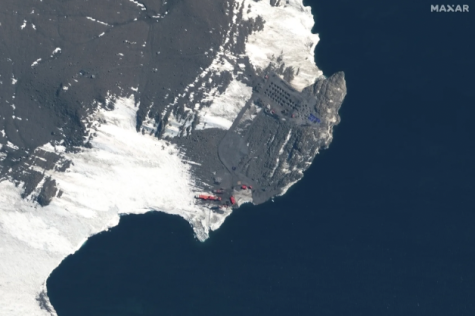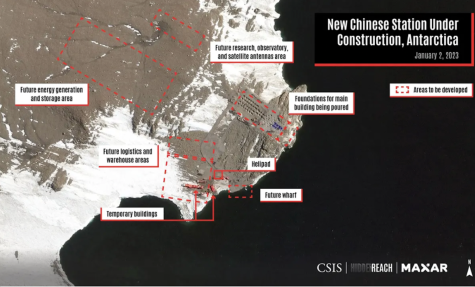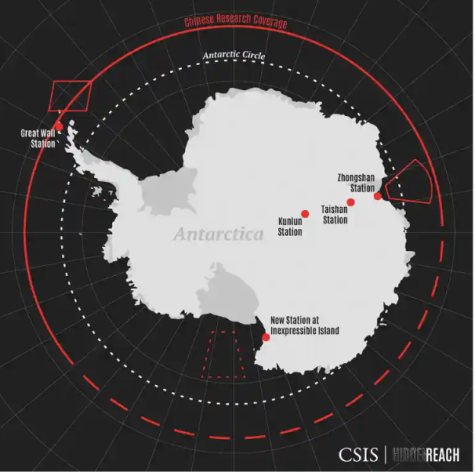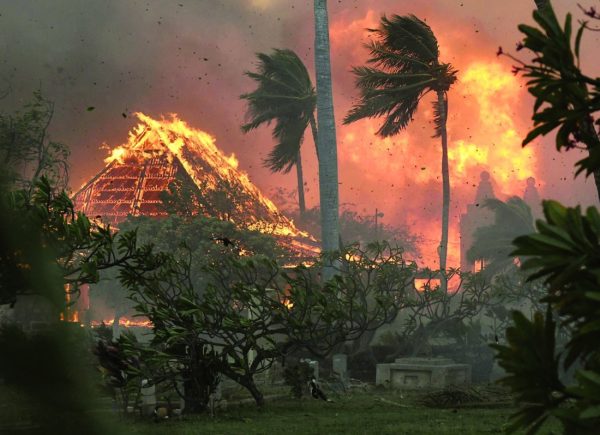Construction in Antarctica
May 19, 2023
After many years of inactivity in the Antarctic, the 5,000 square-meter research site, created by China, has become active again. China’s fifth base in Antarctica, which has not had any developments since 2018, now has a “significant” amount of progress being made. The CSIS (Center for Strategic and International Studies) report claims that China’s station “collect signals intelligence from US-allied Australia and New Zealand”. In addition to this, It will also be able to gather information on rockets, in both nations leaving from newly-formed space stations. China reassures that this station is only for scientific research; however, others suspect it might be a position for China’s military. According to the U.S. State Department. the inspection found no military equipment on the site.


The CSIS report stated that this site will include a wharf for its two Xuelong, an energy facility, an observation area, a scientific research facility, “snow dragon” icebreakers, or other buildings. China is required to abide by the rules of the 1959 Antarctic Treaty, which requires that all activity must have “peaceful purposes”. Scientific research is permitted; however, militaries can not test weapons or set up bases. Han Zheng, Vice President of the People’s Republic of China, states that “China has made remarkable progress in deep-sea and polar scientific research, and significantly enhanced its capability to understand, protect and utilize both deep-sea and polar regions.” China claims that their plan for the Antarctic is mainly based on technology purposes, but also to strengthen their country’s military potentials.













